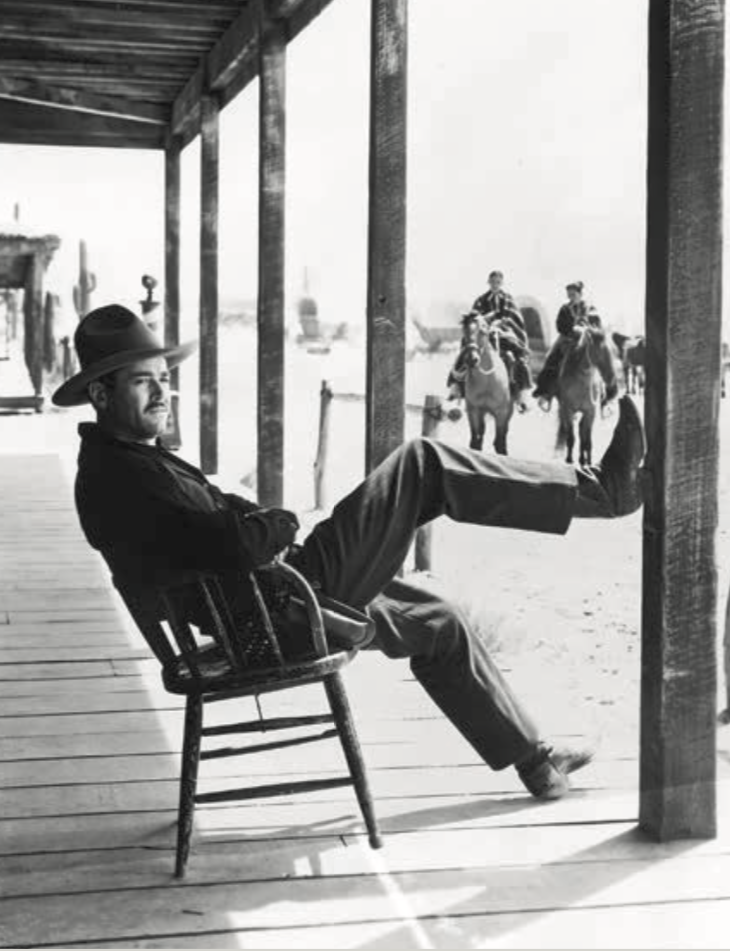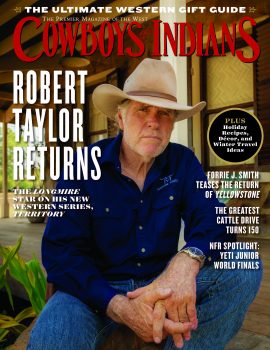As an actor — and an acting teacher — Anson Mount knows the value of research.
To play Cullen Bohannon in Hell on Wheels, Anson Mount has done more than his share of homework, watching westerns both famous and obscure. Some were longtime favorites he eagerly revisited; others, classics he sampled for the very first time. Here are some of his observations.
“Of all the genres, the western is perhaps the most masculine. Even more so than the straight-up war movie, which at its best is nothing more than a depiction of structured insanity. For the war movie, the delicate interplay of light and sound is actually exploded and perverted for the sake of shocking us with what we are capable of doing to one another. The acting often follows suit. Think of Telly Savalas in The Dirty Dozen or Vincent D’Onofrio in Full Metal Jacket.
With the western, it’s different. Here, the interplay of light and sound must not be ripped from its mooring, but achieve a kind of stillness in motion. The western, like the men it depicts, must follow its ‘gut’ rather than extraneous and unnecessary dialogue connected to a spider web of whys and wherefores.
Likewise, the men in a western must help to ground it. Ironically, the one thing men get blamed for never doing in real life must be at the heart of the western performance: listening. I can’t think of a better example of this than Robert Redford in Jeremiah Johnson.
Clint Eastwood has become our prototypical western icon. But there are different Eastwoods. The young Eastwood was, I feel, occasionally hamstrung in his need to convey his character’s thoughts. Throughout his career, it seems that he began to trust more and more that the audience was already taken care of (as long as the director was good) and he could just be. This transition is what allowed him to become the icon that he is. For me, the best Eastwood performance, and the best Eastwood film, is Unforgiven. And it really is true that this film redefined the western by raising the question of what it does to your own soul when you take someone else’s life. The days of easy horseback chases and gunning down dozens of people like they were clay pigeons came to an abrupt halt. The western deepened with this film.
Once Upon a Time in the West has the best first scene in the history of westerns. Sergio Leone captures perfectly the silence of the West. There is not a stitch of dialogue or movement in that opening scene and somehow you are riveted by it. It makes the argument that the first battle being fought in this world is simply to remain awake and alert. It’s great.
I also have quite a soft place in my heart for Leone’s Duck, You Sucker. It’s been buried for a couple of reasons, one being that some of his other films were so hugely successful that this one takes an extreme backseat. But it has also suffered because it does not conform to today’s standards of political correctness. Rod Steiger delivers an unbelievable performance as a Mexican bandito. He actually changed race. When I saw the credits roll at the end of this film, I saw his name and I said to myself, Rod was in this movie? Where was he? When I realized he was Juan Miranda, my mind was blown. The movie is also an excellent example of Leone’s sensibility that the western must, at times, provide levity as a means of escaping the deep gravitational pull of weightiness that westerns can find themselves spinning into.
Before starting work on the fourth season of Hell on Wheels, I watched John Ford’s My Darling Clementine. [Director] Neil LaBute gave me a copy, and I just fell in love with it. The sets are amazing, the cinematography actually breathes, and Henry Fonda is sensational as Wyatt Earp. So, too, is Victor Mature as Doc Holliday. In fact, I think that this movie far outshines some of Ford’s other films, including Stagecoach, which felt terribly claustrophobic in its studio setting. I like to think that Ford learned that a true western cannot be shot indoors, and that’s when he made My Darling Clementine.
And you know that scene where Henry Fonda sits in front of his office and just leans back in his chair? I do something like that in an episode this season. Neil actually challenged me to find a place to use that. So I did.”
Photography: Courtesy AMC, 20th Century Fox/Photofest
From our August/September 2014 issue.













